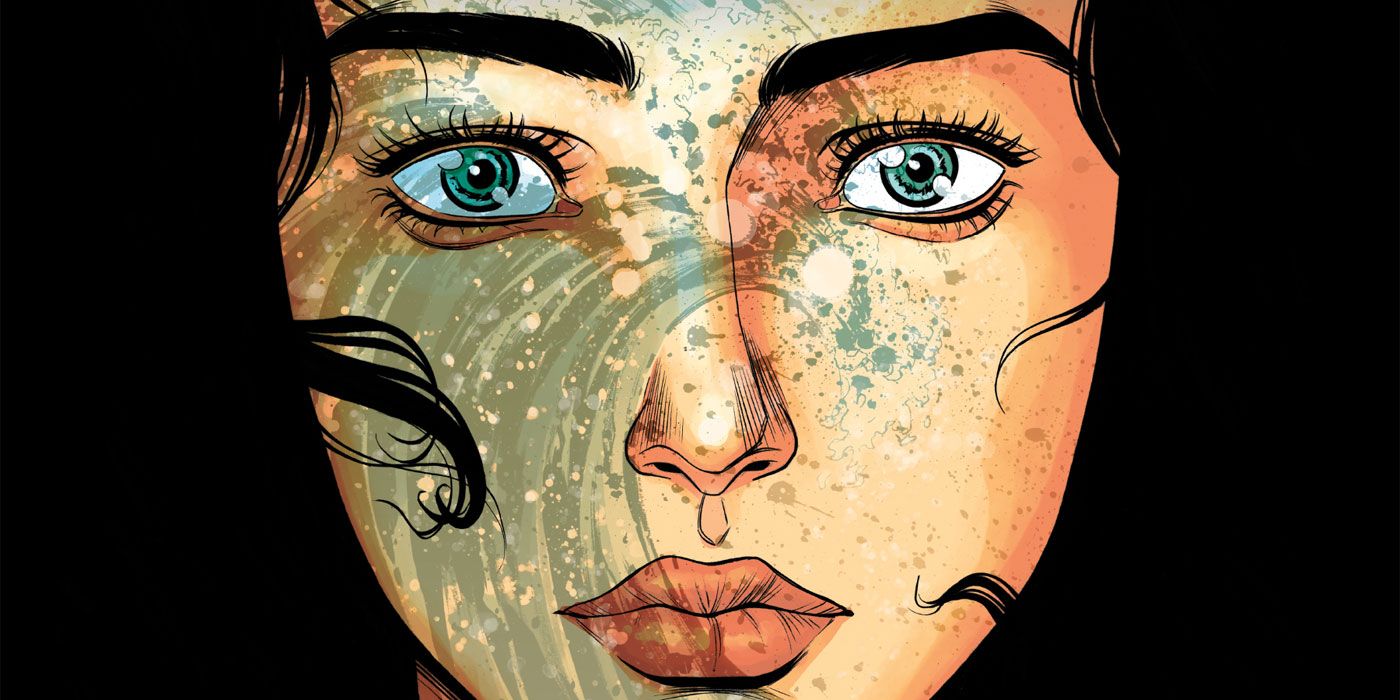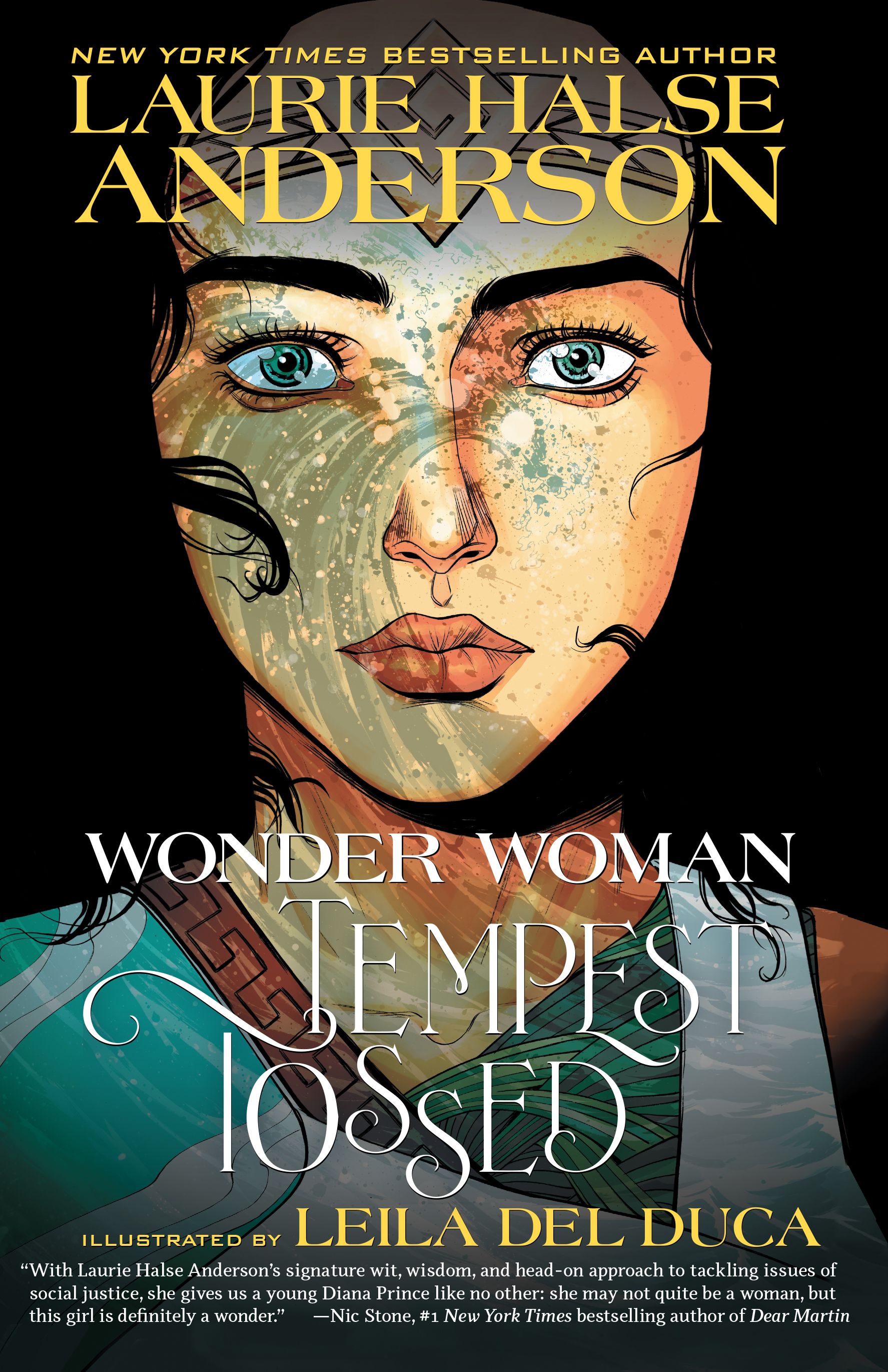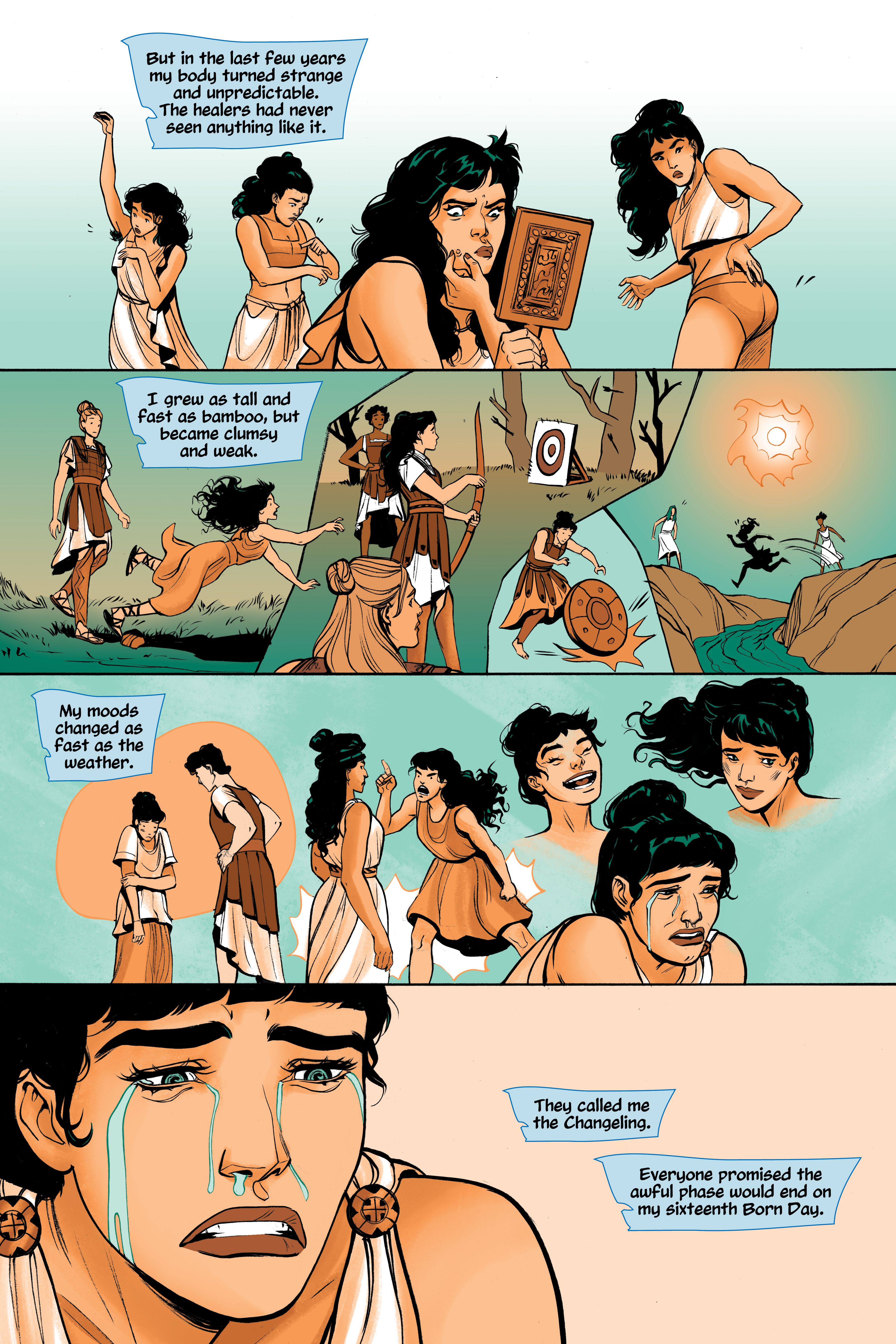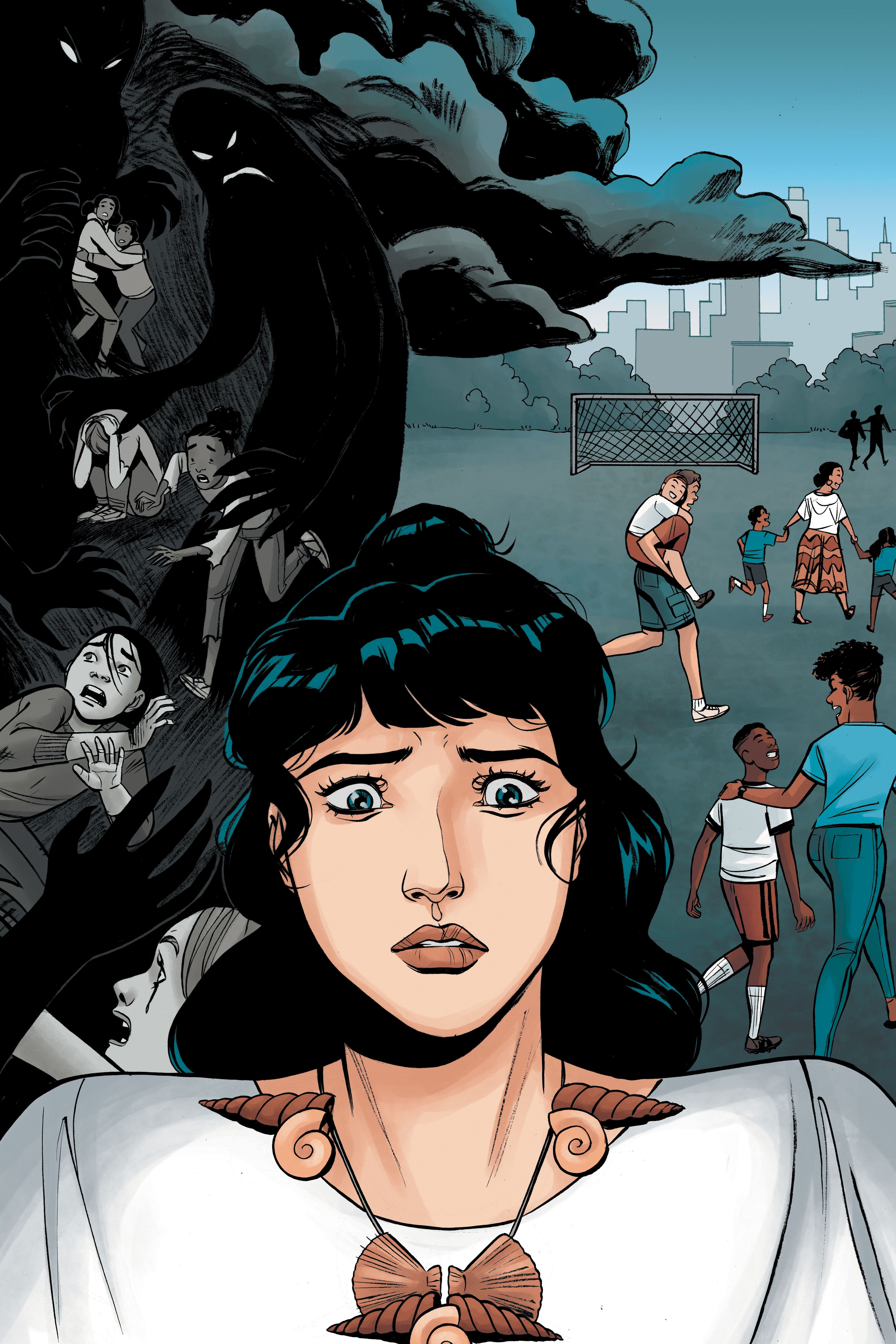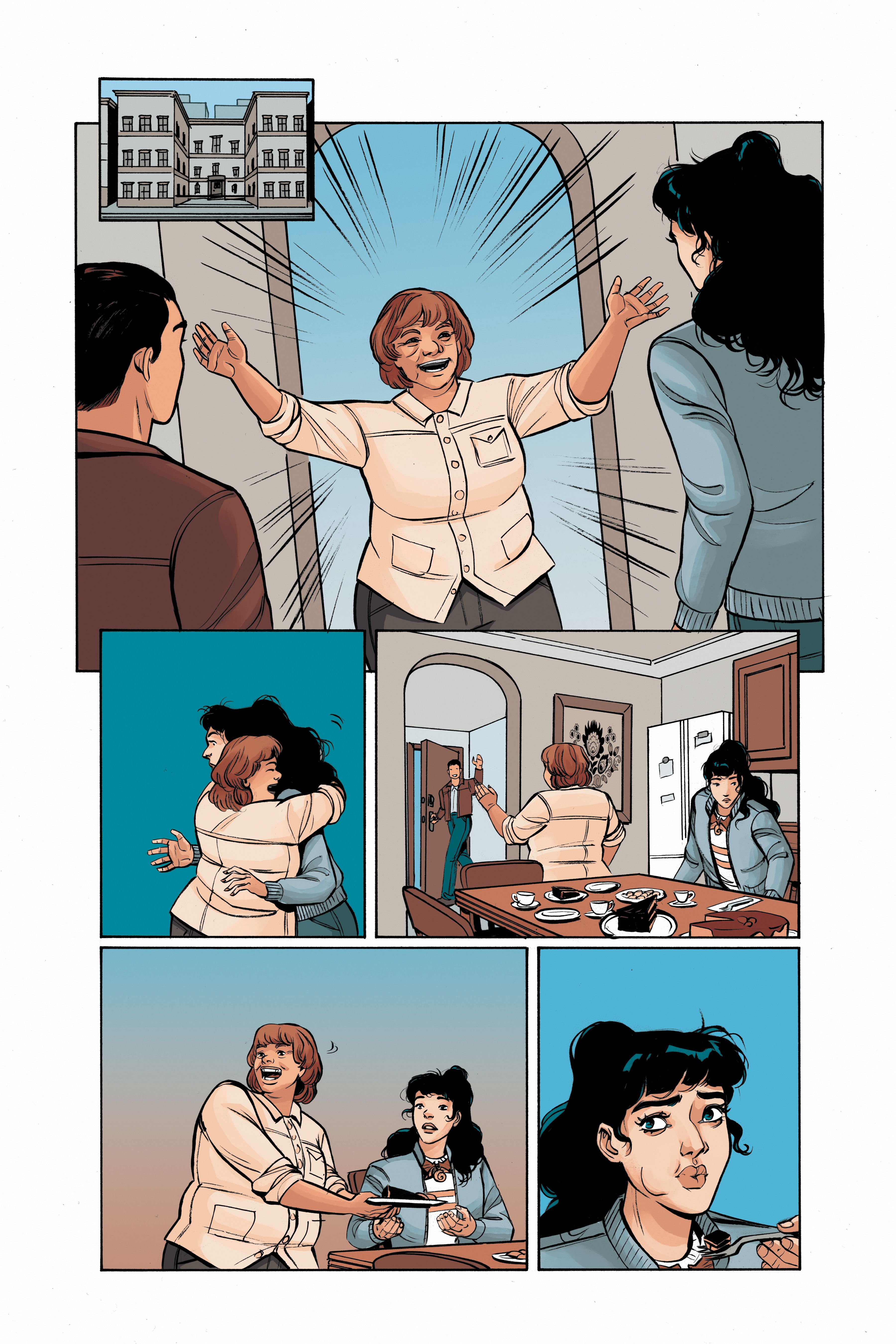WARNING: The following interview contains mild spoilers for Wonder Woman: Tempest Tossed, by Laurie Halse Anderson, Leila del Duca, Kelly Fitzpatrick and Saida Temofonte, available now.
Every iteration of Wonder Woman, aka Diana Prince, has one integral thing in common: She has a steadfast moral compass. Whether on her home island of Themyscira or in the larger world, Diana fights for justice every single day, both as a solo hero and as a member of the Justice League.
In Wonder Woman: Tempest Tossed, a new original graphic novel that reimagines Diana's origin story starting with her 16th birthday, her fight for justice is deeply grounded in the real world. After insisting on helping refugees that wash up on the shores of Themyscira during a storm -- despite direct orders to ignore the refugees' needs -- Diana finds herself trapped on the other side of the protective barrier that surrounds the island, unable to return home.
Alongside the refugees she sought to help, she ends up at a camp in Greece before being taken to New York City. Her skill for languages allows her to communicate effectively with people from all over the world, which in this case allows her to save the day -- though it also forces her to see just how cruel humanity can be.
Ahead of the June 2 release of Wonder Woman: Tempest Tossed, CBR spoke with writer Laurie Halse Anderson and artist Leila del Duca about the book, how they reimagined core aspects of the Wonder Woman origin story and why it was important to explore the refugee crisis through the comics lens.
CBR: How did you initially conceptualize the story for Tempest Tossed? It's very different from anything that we've seen in the main DC Universe.
Laurie Halse Anderson: I write YA for teenagers, mostly, so DC said, "Think about who Wonder Woman -- Diana -- would have been at age 16. We'd like some scenes in Themyscira, then get her to the United States." That was all I needed. It was super, imagining her as a teenager. It was just amazing.
Why did you feel that this particular story was best told with a young Diana, versus an adult version of the character?
Anderson: It's interesting. I think that, in some ways, her character -- even as an adult -- with that passion she has for justice, that passion she has for equality and equity and righting wrongs and protecting those who are vulnerable... It's so common you see that in teenagers, right? That's when they're beginning to find their strength and their power, but they're also a little naïve. There's also a lot they don't know about the world.
Seen through Diana's eyes, we get to see that part of her that's just so stunned by how horrible human beings can be to each other in the world of mankind. At the same time, she wants to make things better. That works for adults, too, but I think there's a certain poignancy because we can all remember what we felt like at that age. We just want to fix everything and, "Why can't they see everything that's wrong?" I love that part about teenagers.
In terms of fixing everything that's wrong, on Themyscira, Diana is very different from the other Amazons and part of her struggle is figuring out where her strength lies in herself, especially as she traverses land and sea and changes and grows. I'm curious: How did that develop as you both worked on this book and followed Diana's journey?
Anderson: Leila just did such an astounding job handling the visuals of that transition and that growth. Do you want to be more specific about that? I mean, Leila, I'm just -- I'm still tearing up when I page through the book.
Leila del Duca: Aww, thank you so much. Laurie wrote an amazing script that I really connected to, because it did speak to the girl I was as a teenager -- having a really optimistic view of what is possible in the world, but not really knowing the logistics of how to go about doing it and how adults made a lot of things impossible.
Anyway, artistically, I'm an artist who likes to portray varied bodies and this gave me the opportunity to show Diana as a teenager with an awkward body. I love the page Laurie wrote that shows her going through puberty and being clumsy around the other Amazons, because her body is changing. She's the only one on the island whose body is changing like that, so that was really fun.
When she's on Themyscira, the page layouts are a little bit more creative and fantastical, because this is a fantasy realm. I got to design some really cool clothing based off of Ancient Greek garb, which was super fun. It was also really exciting to draw flowy clothing and to design the kind of clothing I think I would want to wear as a teen girl. Things are more beautiful, in my opinion, on Themyscira.
As a teen living in Montana and growing up around nature, things were more calm and beautiful. When I found myself moving to a larger city as an adult, I felt this coldness and this chaos going through cities, so I kind of wanted to portray that with Diana as well. The first time she goes on land, it's in a refugee camp in Greece and it's bad and cold and dreary. Then when she goes to New York City, even though there's a lot of variety and many cultures there, it's sort of a mad, chaotic place compared to what she's used to. The page layouts get a little more stark to try to portray the emotions I was trying to get across.
Laurie, you spoke to this a little bit already, but why did this story feel right for Diana Prince versus another DC hero? Why does the story work best with her as the protagonist?
Anderson: I studied linguistics and I've just always been really drawn to languages and communication. One of Diana's skills that comes into play that's a really significant plot point is her ability and the Amazons' ability to understand all languages. When I look around at the horror of the way we treat each other in our country, in the world, to me we have everything in common and it's almost like we're separated by languages. Here's the woman -- here's the girl -- who can unite all of us and can understand and do that hard thing.
I also wanted to touch on somebody whose moral strength is as important as her physical strength. I've also adored Wonder Woman since I was 10 years old.
How familiar are you both with DC canon and who are your favorites in that universe, aside from Wonder Woman?
Anderson: I don't have a great answer, because Wonder Woman was my girl. My mother did not like her as a role model for me; my mother had a really interesting view on what girls were supposed to look like and be in the world. So I did not embrace the entire canon; I couldn't be a fangirl, because I didn't have permission and I didn't have the money, so I got a very narrow view of it compared to a lot of other people.
del Duca: I wouldn't say my knowledge of the character is that expansive, either. I didn't grow up reading print comics. I grew up creator-owned webcomics and when I did end up reading Wonder Woman comics -- I only remember the artist, Terry Dodson -- but I thought they were wonderful and fascinating. I loved her character because she did have a strong moral compass and it wasn't just about punching and kicking her way out of problems. She wanted to solve things by communicating with people and I think that's something Laurie really did amazingly in this book, is play to that part of the character really well.
The graphic novels DC is putting out don't necessarily exist in the main DC Universe continuity, which gives creators a lot of freedom. How did you strike a balance between what you knew readers might expect of a Wonder Woman graphic novel and the very specific story you wanted to tell?
Anderson: That's a great question. That deserves its own essay. There's a legacy here. There's a lot of history -- generations of creators and generations of fans. You don't want to disrespect any of them. Everyone's got their favorite Wonder Woman or their favorite storyline and then they get really irritated when something else changes and that's totally valid. Again, I keep coming back to this phrase "moral core." If I stayed true to that, I hope the diehard fans will come along with me for the ride. It'll be interesting to see what they think of it, but I tried really hard not to do anything that felt out of character for who she is.
What do you hope readers take away from Wonder Woman: Tempest Tossed?
Anderson: I hope they recognize the promise we make to each other as Americans: That this is the place we come to when we can't stay home. We are going to be joined and create a new kind of country with respect and honor and justice for all people. That's the promise; that's the dream and we haven't come close to filling it. We need a lot more superheroes. I love what we're supposed to be in this country and every single day, I am horrified by how far we are from that ideal.
I think if we can help raise up a generation of kids who do see each other as their fellow country people with love and honor and respect -- if they can recognize that superhero within each other so they can do it better than the generations who came before... Diana does that in the early part of this book. The Amazons have their tradition of when they're allowed to go outside the bubble of Themyscira and interact with the world of mankind. Diana's like, "This is wrong. I'm going to go make a diffference."
That's what I'm hoping for, is that readers will say, "I've got that kind of passion." If we can let kids connect with that kind of strength inside them, then that promise that we make -- in our Constitution, in the Declaration of Independence, at the foot of the Statue of Liberty -- will make those dreams come true, finally.
del Duca: Beautifully said. I like that this book is about American idealism and shows the cracks of that dream. I hope people find a friend in Diana, that people who come to this country expecting something and then being really disappointed... Even growing up in the United States of America, I've been really disappointed, too. It's nice to see a book we can relate to on those levels, like how hypocritical it is and how wrong it feels that billionaires live in mansions but we have a massive homeless problem with people starving and freezing to death on the street. I guess I would like people to find a friend in Diana, who shares those same frustrations and values.
As the book shifts from place to place, but also as Diana learns, grows and begins to embody her ideals, the tone of the story shifts with the writing and the art, but there are also such subtle changes in Kelly Fitzpatrick's colors. That made me wonder about the collaborative process of creating Tempest Tossed -- do you feel as if the story became more realized as each layer was added?
Anderson: We had some conversations early on about what palette to use, but you know, Team Wonder Woman was badass. It was amazing.
On another note, how cool to see an all-woman team on this book. That was really cool.
Anderson: Right? That was really cool. Amazons, all of us. That's what it felt like. I didn't have much to say about the art; I was just like, "Holy crap, this is incredible!"
del Duca: That's awesome. I think from the beginning, they asked Kelly to do a limited palette of some sort. There were notes to change the palette a little bit when Diana moved into the human realm, to add that emotion I think you noticed when you read the book, so -- good eye. That's exactly what she was instructed to do and I think she did a great job.
Laurie, when you're writing a graphic novel, what is it like to have these characters envisioned in your head and then see them on the page as the book is created?
Anderson: I don't have great facial recognition, so the characters are always kind of nebulous in my imagination. I had really clear images of the settings and Leila just nailed them. It's complicated; there are a lot of different locations in this book and then there's angles and sight lines, close-ups and backing off -- things were so much better than I could have ever dreamed and it was just joyous. I've done picture books before, for little kids. It feels like that was kind of a kindergarten craft experience and this was graduate school.
Where did the idea to reimagine Steve Trevor as two men who are husbands come from?
Anderson: My head.
Well, obviously, but why did it feel important?
Anderson: I wanted this story to be about friendship, without Diana having a love interest. You don't always have to have a love interest; sometimes the love interest is friend love. Then I thought, "What are we going to do with Steve? Oh -- Steve and Trevor." As soon as I conceived of that, I decided one was going to be a diplomat and one was going to be a doctor. Then the character of Henke Cukierek, the Polish grandmother -- her name is a Polish translation of Etta Candy. Welcome to America and welcome to 2020, Hell that it is. It's not a book about "the gay," but people love each other and have these relationships and friendships and that's just the way it is.
Would you ever want to revisit these characters and this story?
Anderson: Oh hell yeah. Absolutely.
del Duca: Definitely.
Wonder Woman: Tempest Tossed is available everywhere books are sold.

